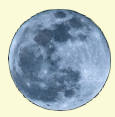
Search

As of October, 2016, Embarcadero is offering a free release
of Delphi (Delphi
10.1 Berlin Starter Edition ). There
are a few restrictions, but it is a welcome step toward making
more programmers aware of the joys of Delphi. They do say
"Offer may be withdrawn at any time", so don't delay if you want
to check it out. Please use the
feedback link to let
me know if the link stops working.

Support DFF - Shop
If you shop at Amazon anyway, consider
using this link.
We receive a few cents from each
purchase. Thanks

Support DFF - Donate
If you benefit from the website, in terms of
knowledge, entertainment value, or something otherwise useful,
consider making a donation via PayPal to help defray the
costs. (No PayPal account necessary to donate via credit
card.) Transaction is secure.

Mensa®
Daily Puzzlers
For over 15 years
Mensa Page-A-Day calendars have provided several puzzles a year
for my programming pleasure. Coding "solvers" is most fun,
but many programs also allow user solving, convenient for "fill
in the blanks" type. Below are Amazon links to the
two most recent years.
Mensa®
365 Puzzlers Calendar 2017
Mensa®
365 Puzzlers Calendar 2018

(Hint: If you can
wait, current year calendars are usually on sale in January.)

Contact
Feedback:
Send an
e-mail with your comments about this program (or anything else).

|
| |
Problem Description
"Once in a Blue Moon" is a phrase indicating the rare occurrence of a
condition or event. A program to calculate the occurrence of Blue Moons is
the objective of this exercise.
Background & Techniques
 The information used in this description and in the program are based on
my interpretation of information found on the Web, largely from Wikipedia
articles. "Once in a Blue Moon" is an English or at least American phrase
meaning "not very often". The program explores how often they actually occur
under one of the two common definitions, neither of which actually depends on
the color of the moon. The information used in this description and in the program are based on
my interpretation of information found on the Web, largely from Wikipedia
articles. "Once in a Blue Moon" is an English or at least American phrase
meaning "not very often". The program explores how often they actually occur
under one of the two common definitions, neither of which actually depends on
the color of the moon.
The astronomical definition is based on seasons of the year; specifically a
"Blue Moon" is the 3rd full moon in a season (Spring, Summer, fall, or Winter)
which has 4 full moons. Since lunar months are shorter than calendar months,
there are occasionally 13 full moons in a year. In those years, there must be 4
full moons in some season and a Blue Moon occurs.
A second common definition is calendar based and simpler to state. A blue moon
under this definition is the 2nd full moon in a month. Full moons and seasons
occurs at different local times depending on one's east-west location,
however calendar days always change at 12:00 Am local time. This makes is
possible for two full moons, (and therefore a Blue Moon under this definition),
may occur in a particular calendar month in one time zone but not in a
neighboring time zone.
Back to the season based definition, our program faced two sub-problems: "When
exactly do the seasons change?". And similarly "When exactly do the full moons
occur?". Most everyone knows that the summer and winter, (the "solstices"),
start on days with the most and fewest daylight hours respectively and spring
and fall, (the equinoxes), begin on the two days per year when the sun crosses
the equator and hours of daylight and darkness are about equal. Note that both
seasons and full moons occur at an exact moment and since it's the third full
moon that counts, the local times of these events may vary, but will always occur in the same
season regardless of the timezone.
We have seasons because the earth is tilted on its north-south axis relative to
the path of our annual path around the sun (named the "ecliptic"). Of the
various astronomical measurement systems, the "ecliptic" system is most
convenient for purposes of defining seasons. As we follow the ecliptic, the
north end of the earth's axis is sometimes angled toward the sun (spring and
summer for those of us in the northern hemisphere) and sometimes away (our fall
and winter). Southern hemisphere season are exactly the opposite. The measure of
the apparent sun position on the ecliptic for any date is it's "ecliptic
longitude". The 0° ecliptic longitude is assigned to the date and time
when the sun crosses over the equator on its way north. By convention, this is
the date/time of the Vernal (spring) equinox and labeled as 0° From this
point and moving counterclockwise, the other seasons begin at 90 degree
increments (90° degrees for Summer Solstice, 180° for the Fall Equinox, and 270°
for the Winter Solstice. We have a set of Astronomy procedures on the DFF
website which
return the Ecliptic Longitude for any date and time. This program tests dates at
1 minute increments around the season begin date to find the date and time whose
ecliptic longitude is nearest to the target ecliptic longitude.
Full moons similarly are defined as the instant when the moon's ecliptic longitude differs from
the sun's ecliptic longitude by 180 degrees. By
comparing season start times and full moon times, when can assign every full
moon to a season. When there are 4 moons in a season, we report the 3rd one as a
"Blue Moon".
Calendar months with two full moons are also identified for those who prefer that
definition.
Running/Exploring the Program
Suggestions for Further Explorations
 |
??? |
| |
|
| |
|
| Original: July 5, 2012 |
Modified:
May 15, 2018
|
|

